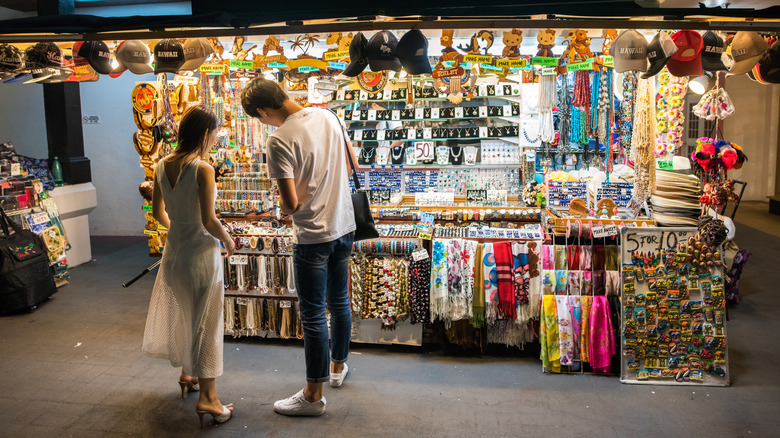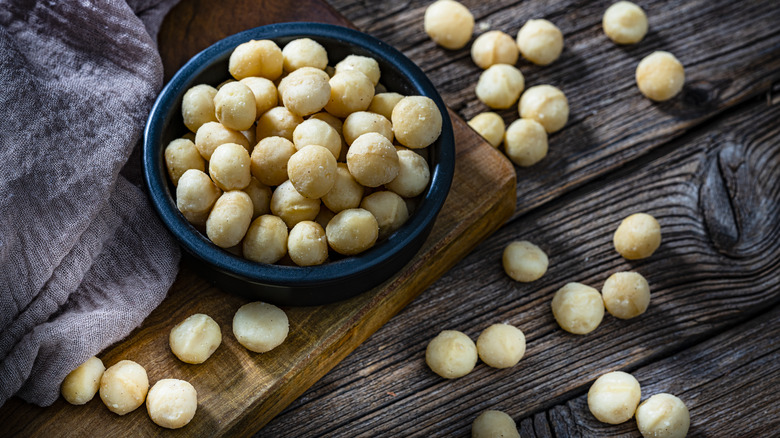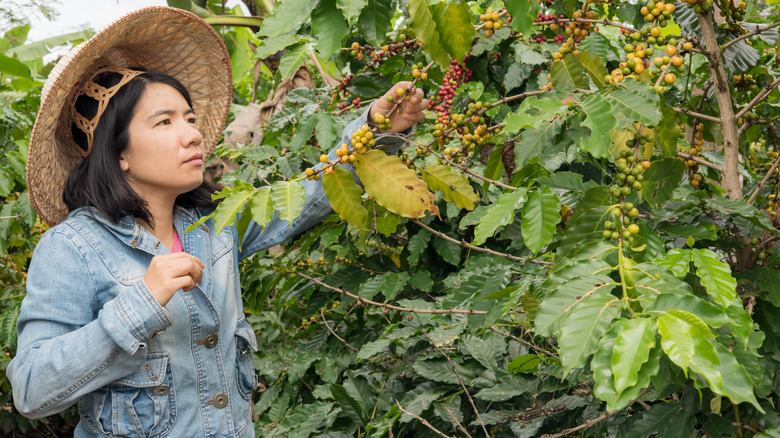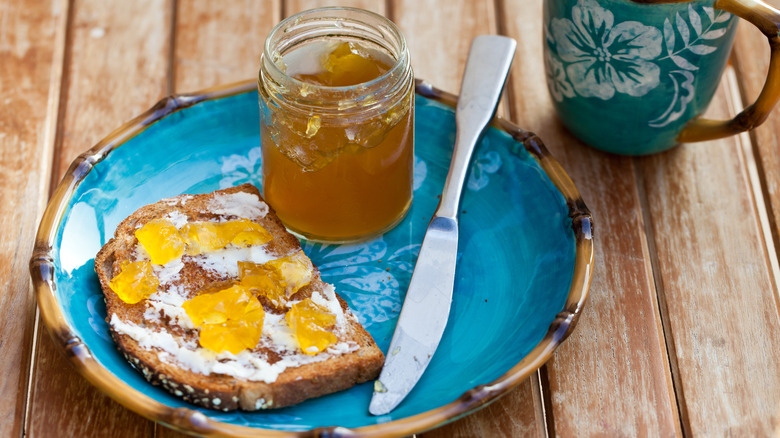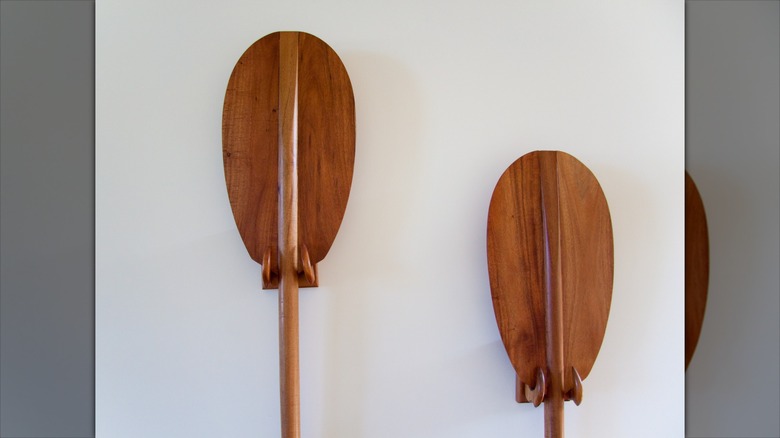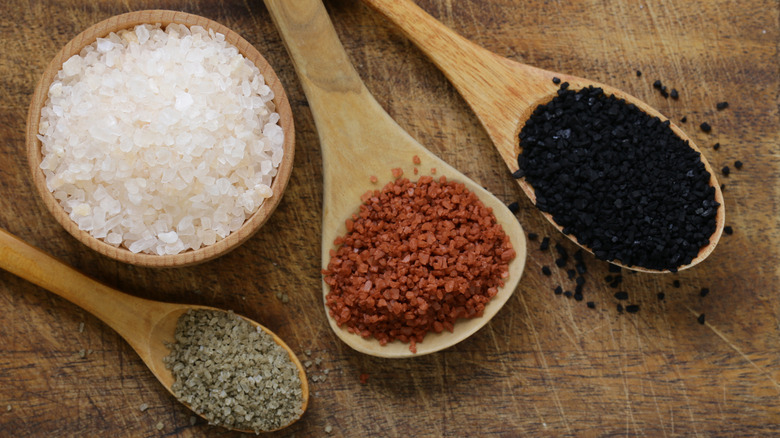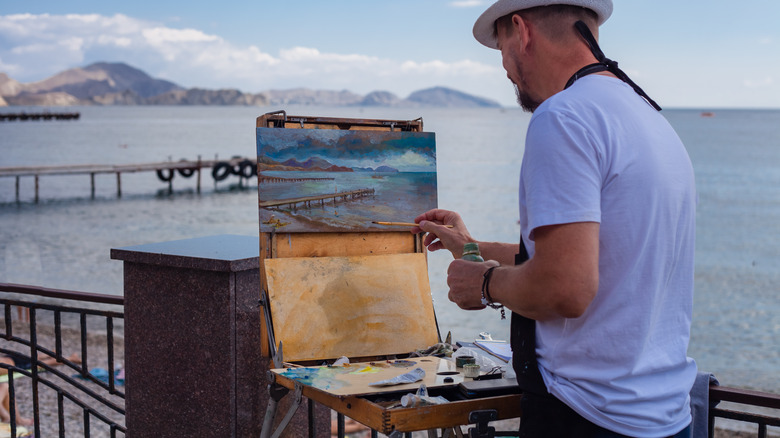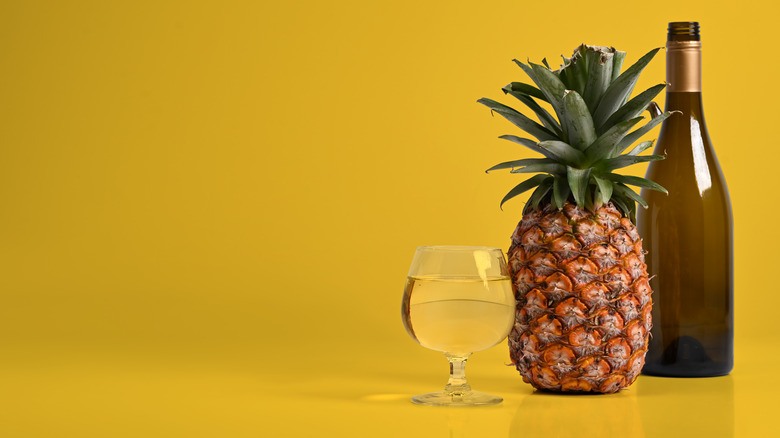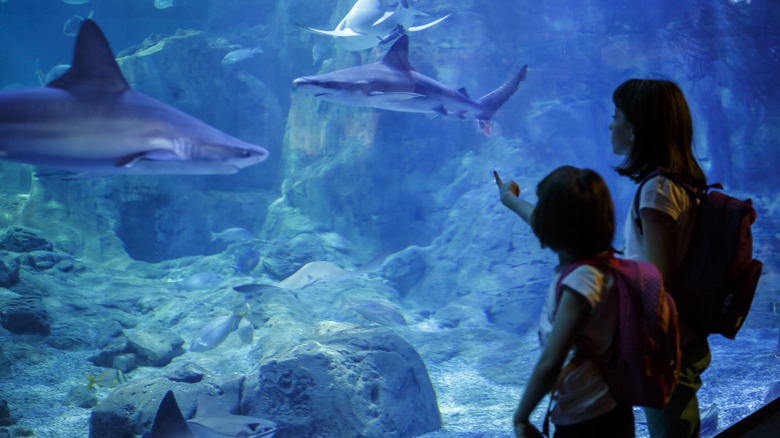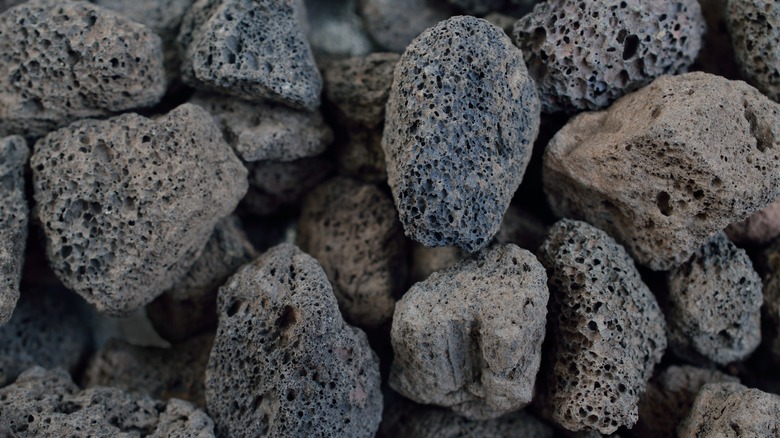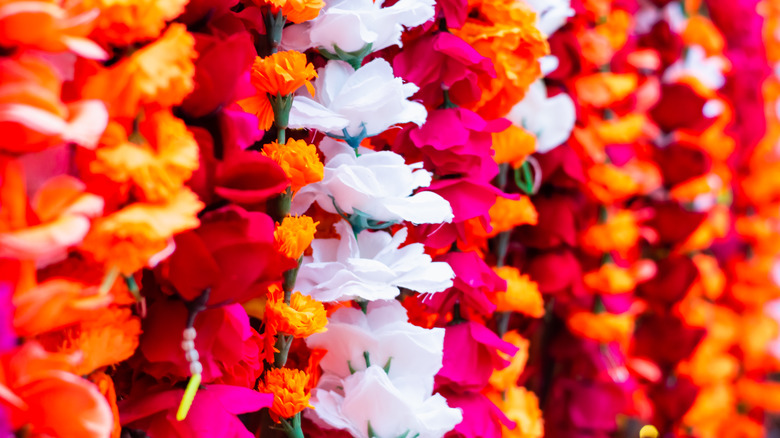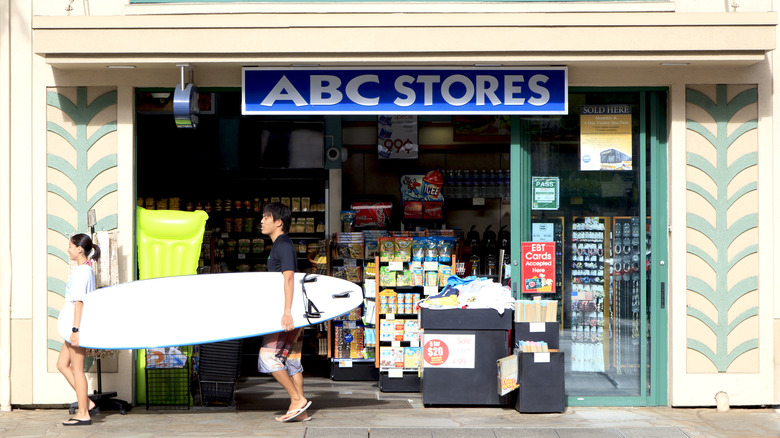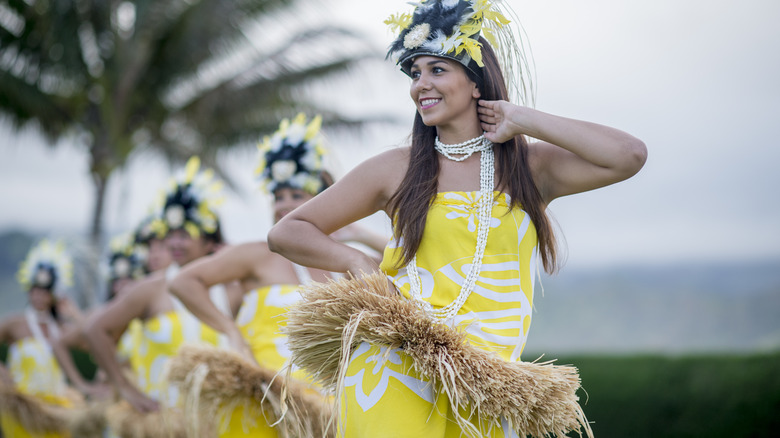7 Souvenirs To Get In Hawaii And 6 You Should Skip, According To Travelers
A trip to Hawaii is almost a rite of passage for the average American. It's as if your life won't be complete until someone in a grass skirt knights you with a lei, and you greet everyone with "Aloha" for the month following your trip. However you decide to explore the U.S.'s world-famous island chain will make it a worthwhile journey, but one thing is certain: Vacationing in Hawaii is expensive. For a state heavily reliant on imports, one where a quarter of the economy is built on tourism alone, don't anticipate a budget vacation. After you've accounted for flights and food, there's often little left in the coffers for souvenirs. You'll want to make sure every last penny goes to something worthwhile.
Once you get to the Hawaiian souvenir shops, you'll find a conveyor belt of cut-rate, tacky souvenirs just like at every other tourist hotspot on the globe. The tourism industry knows you'll buy them as proof of your trip, and only when the island daze wears off will you realize these trinkets aren't worth the plastic they're made of. Let's make sure your keepsakes do more than collect dust. Today, we're discussing Hawaiian souvenirs you should get and souvenirs you should skip. We've compiled this list with the help of discussions on travel forums, a few tips from Hawaii-specific experts, and recommendations from a handful of publications and online blogs.
Get: Macadamia nuts
Though not native to Hawaii, Macadamia nuts (also known as "macs") are about as Hawaiian as pizza is to Italy. It all began when an Australian botanist brought the first such tree to the Aloha state in 1881. These delicious round tree nuts are known for their soft, butter-like flavor and are packed with vitamins, antioxidants, and fiber, they may even be weight loss aids and help gut and heart health. Aside from snacking, the nut can be made into hummus, baked into banana bread, or mixed into fried rice. You can tour dozens of working macadamia plantations in Hawaii and try these delicious nuts off the branch.
These are a must-buy, and they're an affordable one, too. You can find them practically everywhere on the islands, as both grocery stores and hotel souvenir shops sell them. We highly recommend sourcing them directly from farmers where possible — it's the perfect excuse for an agricultural tour of stunning Hilo. You'll be supporting the local economy and ensuring you don't get a stale bag that's been sitting on some musky shelf for months. Remember to try chocolate-dipped macs — you'll thank us later.
Get: Kona coffee
We coffee aficionados take our cues from sommeliers at times. We talk about vintages like Vietnamese and Colombian and smack our lips after a sip of brew, muttering buzzwords like "robust" and "flavor profile." Prepare to add another vintage to your collection: Kona coffee. Coffee, like Macadamias, arrived on the islands in the 19th century. The "Kona" name derives from the district where most of the said coffee variety grows, and there couldn't be a better-suited place than Hawaii to grow the stuff. The fertile volcanic soil and supreme tropical conditions create a delicious blend guaranteed to please anyone amenable to a morning cup of Joe.
Like with Macadamia nuts, you'll find a plethora of Hawaiian coffee companies offering tours of the fields. The history is fascinating. Immigrant laborers from China and the Philippines once cultivated it, and there was a brief period when the coffee market collapsed, and production was kept alive by small Japanese family farms. Visiting these coffee plantations means you'll be getting fresh beans or grounds straight from the source. When your friends ask you what you brought back from your travels, you can invite them over for an island latte.
Get: tropical fruit jams
Hawaii is a bountiful breadbasket for juicy, fresh fruits, from mangoes that drip down your chin to dragonfruit, passionfruit, and more. It's only logical that you'd want to bring that goodness with you on the plane home. Not so fast — the TSA will confiscate them from your bags faster than you can sing "Aloha Oe." Hawaii goes Defcon 5 whenever it comes to disease and pests, whether on or off the island. This is, after all, the only state that is rabies-free, thanks to its strict policies. Instead of flirting with the ire of a fatigued TSA officer, swap out the fresh fruit for jam.
You can find fruit jam for virtually any fruit you can imagine. Provided you're not buying Walmart's Great Value, you'll be getting it Hawaiian-made with fruit grown on the island, just like the Macadamias and the coffee. It's delicious and nutritious and gives you a reason to return once it runs out. We recommend brands like Aunty Lilikoi and Maui Upcountry. Just make sure you pack these breakable items well in your checked bags to avoid giving your entire suitcase a taste.
Get: Koa wood items
Macadamia nuts and coffee beans may not be endemic to Hawaii, but the Koa tree certainly is. Koa wood goes way back and was a staple in pre-colonial Hawaiian culture for crafting everything from canoes to clubs. At one point, you'd have to be a Hawaiian monarch to lay your hands on it. Koa wood was once an abundant resource, but today, it's nurtured in a few small reserves across the island, making it rather pricey. The wood features rich earthy grain patterns, a mix of light and dark tones, and a brilliant polished sheen, unlike other species of tree. It's also a "tonewood," a highly sought-after material for crafting guitars and ukeleles, thanks to its unparalleled acoustic properties.
In terms of souvenirs, the sky's the limit for what sorts of Koa crafts you'll find for sale. You'll see tons of bowls and cutlery, but do a bit more searching, and you may find Koa-wood pens, bookmarks, and even drink coasters. Again, this is a great way to support the local economy since Koa only originates from Hawaii. It also just so happens to be a sustainable industry, so you need not feel guilty for contributing to needless deforestation.
Get: Hawaiian sea salt
Kona wood may no longer be abundant, but one thing Hawaii will always have is sea salt. It is generally considered healthier than your average table salt, works fabulously in bath salts and body scrubs, and has antiseptic properties. Like that precious Himalayan pink salt you keep in the pantry for special occasions, Hawaii has two sea salts of its own that you should add to your cuisine: Black Lava salt and Red Alaea salt. Both are rich in electrolytes, iron oxides, potassium, and all those other mineral goodies. Black Lava salt is literally black in color, thanks to coconut charcoal, giving it a "smoky" flavor. Red Alaea salt derives its rich red color and unique taste from the clay where miners source it.
You could buy these salts for a premium online, but it is better to buy them during your trip to Hawaii. You'll find them everywhere in grocery stores and souvenir shops. Who knows, you might get to try out a Hawaiian dish flavored with them to decide whether or not to pull the trigger on a shaker of your own. These salts are ubiquitous enough that you won't have to shell out a fortune to get some, making this the ideal little add-on souvenir to complement bigger souvenir purchases.
Get: local art
Buying art on vacation is one of those things that sometimes feels like a scam. From Seattle to Sydney, there's always that one art merchant with a tent full of identical knock-off acrylic canvases that cost more than the Mona Lisa. Rest assured, that's rarely the case, even amongst the most magnetic tourist traps on the Big Island. Hawaiian art mimics the laidback culture of its natives. You'll find colorful depictions of its verdant mountain ranges and surfers hanging ten-toed. Be on the lookout for those iconic red-and-white Hawaiian quilts or custom shell jewelry.
Prioritize artisans over resellers; these are the ones making their art live while you peruse their inventory. Many couples get cartoon portraits to make for a more bespoke memento of their time on Hawaii's spectacular beaches. You can go all out with a painting that barely fits in your checked-in luggage or buy an inexpensive bead bracelet for those workdays when you need a reminder of the crashing waves and sea breeze. If all else fails, grab a hand-painted T-shirt last second before heading to the airport.
Get: pineapple wine
You heard that right — Hawaiians make pineapple wine. You can make wine from virtually any fruit; peaches, blackberries, persimmons, and, yes, pineapples. Hawaii has a special relationship with pineapples, being one of the world's best (and first) locations to grow them. This fruit used to be so rare and expensive that the wealthy would often use it solely as a dinner-party decoration since they paid upwards of $8,000 to get one. Though pineapples are cheap today, it's fitting to celebrate the opulence they once enjoyed by making them into a wine. Pineapple wine is a sweet, white wine that doubles as the perfect chilled base for cocktails.
As a bonus tip, book a wine tasting. Explore Hawaii's gorgeous agricultural slopes while quaffing the drink so you can better select the vintage that suits your fancy. Just be careful when bringing any wine bottles home — the tempered glass is made tough for transport, but you never know how hard the airport baggage handler could be bodyslamming your Samsonite.
Skip: preserved animals
When you visit Hawaii, you'll get a special feeling of oneness with the universe and a cultural inclination toward preservation and conservation. Hawaii's islanders do everything in their power to avoid spoiling the bounty Mother Nature has bestowed upon them, and have a history of activism to prove it. Sadly, a select few individuals aren't quite on board with this philosophy and prey upon visitors' more macabre fascination in the hope of pulling a profit.
Here and there, you may spot a quite disturbing little souvenir — dead animals preserved in containers filled with a chemical solution. Trigger warning before you click: These images may be upsetting for some of our readers. We are talking about baby sharks, tortoises, and other native species put on display in jars that should really be in an unhinged scientist's laboratory. It's certainly a sight to prepare yourself for mentally as you pick your way through the odd souvenir shop.
Granted, it's not like you'll find these in every mom-and-pop shop you pass through, but it goes without saying that you should not patronize an industry that capitalizes on the wholesale slaughter of animals. The Wild Aid has a saying that's apt for this situation: "When the buying stops, the killing can, too." Boycotting this practice is the best you can do while on vacation. There are far more sustainable–and cruelty-free–alternatives to snag while looking for souvenirs.
Skip: rocks and sand
Hawaiian beaches feature sand of all colors — black sand, white sand, and even red sand. You'll regularly stumble across porous lava rocks, brain-like pieces of dead coral, and a panoply of shells. These are fascinating natural reminders of your vacation, and so, you might assume, why not bag a few and take them home? You shouldn't because, first of all, it's illegal. Tired Hawaiian officials, CBS News reports, have been begging tourists for years to quit taking their lava stones. Many people get so choked up with guilt that they end up sending the rocks back with apology notes — a pain in the neck for officials since they then have to put these stolen samples back where they belong.
Second, there are ecological ramifications. Removing sand, in particular, impacts marine ecosystems, coastal erosion, and more. Sure, humans aren't removing as much as the resource extraction operations that do the worst damage, but multiply a handful of sand by thousands of tourists, and you have a problem.
Third, it's culturally insensitive and rude. Hawaiians are superstitious and cling to the old tales of the deity Pele, who curses those who dare to steal her lava rocks. Whether or not you believe in Hawaiian deities is beside the point. Taking rocks and sand is a slap in the face, culturally speaking, to people who welcomed you into their home.
Skip: plastic leis
Ask someone what the most recognizable symbol of Hawaii is, and they'll probably tell you it's a lei — which has a heartwarming history, by the way. These are those flower garland necklaces that serve as the de facto entrance ticket for a Hula. Not wearing a lei at least once in Hawaii is like missing out on the cowboy hat in Texas. They're a great complement to your flowery polo shirt and incorporate kika blossoms, orchids, and carnations. Inevitably, you'll want to buy your own once the hotel-provided one withers away, preferably in a plastic form that will last longer. Hold your horses, though; we recommend against those cheap plastic leis.
Why? For starters, you can buy these leis online anytime, anywhere, for cents on the dollar. A souvenir doesn't usually mean as much if you can get it at home, cheaper, with same-day shipping. More concerning, however, is the environmental impact. The scourge of microplastics has become one of the most significant health disasters of our age. Microplastics are everywhere, including inside of us, thanks to our relentless pollution of the environment with cheap plastics that can take around a thousand years to decompose fully. Plastic leis contribute to this crisis. Go for organic leis with real flowers instead.
Skip: cheap ABC souvenirs
Hawaii has its own homegrown chain of convenience shops called ABC Stores. ABC is about as Hawaiian as it gets; the same family that founded it continues to operate it. These shops are the perfect place to grab a snack, some reef-safe sunscreen, or replace those sunglasses you lost while surfing. When you invariably stroll through their aisles, you'll discover they also sell souvenirs. Kukui nut chokers, keyring charms, cheap shirts — ABC Stores has it all. Unfortunately, you may want to look elsewhere.
Take, for example, this discussion between travelers on the Tripadvisor forum. Visitors note that ABC souvenirs are often low-quality and cheap, with a "Made in China" sticker slapped on the bottom. Many lament this since instead of selling genuine Hawaiian-made art, ABC appears to be pawning off bulk junk.
There's really no point in buying it when you can find a Hawaiian artist down the street making souvenirs with their own hands. To be clear, we're not saying you shouldn't buy from ABC Stores. Rather, be wary and focus on souvenirs with obvious local origin. It's more meaningful and puts money into Hawaii's pockets.
Skip: a cheap ukelele
"Whoa, whoa, whoa," you might be saying, "Go to Hawaii, but don't buy a ukelele?" Hear us out. There's no doubt that ukes are up there in the trinity of Hawaiian-ness, right next to leis and crystal-clear waters excellent for snorkeling. Many tourists find a cheap ukelele during their bargain crawl and get it for kicks. Hey, you might not be able to play it like Honolulu-born Israel Kamakawiwoʻole (singer of that classic "Over the Rainbow/What a Wonderful World" ukulele medley), but at least it's a nice decoration to put on the mantle at home. Let's briefly examine why you might rethink such a decision.
The biggest issue is that the ukulele you'll buy will probably be cheap and mass-produced. Many are plastic. Tourists can rarely tell the difference since they'll only strum out a few chords before setting it aside. It's hard to endorse a low-quality product made as a cash grab, one that will break easily and end up in the garbage.
That said, there will be some musically oriented travelers out there who want a ukulele to learn how to play it. In that case, consider investing in a quality uke instead. You'll be supporting a healthier, more beneficial local industry, and the money you lay down will give you more incentive to play it.
Skip: Hawaiian clothing
We aren't here to dissuade you if you've got your sights set on a colorful Aloha shirt. Do, however, think twice about buying traditional Hawaiian attire. Hawaiian history encompasses a wide variety of clothes, from bark cloth skirts to loincloths and the long holoku dress. Hawaiian men and women wear skirts known as sarongs, and whalebone necklaces are a common sight. All beautiful clothing, most of which you'll find in flea markets. Just take a step back here and think critically.
Above all else, ask yourself if you'll really wear a particular garment again once you return to the humdrum of everyday life. Unless you live by the beach, opportunities will be few and far between to whip out that sarong dress or grass skirt. Don't waste money on clothing that will be moth food for your closet.
Then there's the potential risk of cultural appropriation, the act of adopting a group's cultural elements in a disrespectful or stereotypical way. Hawaii has a painful history of colonialism with the United States, one that is difficult to grasp on a short holiday. There's no clear verdict on whether a non-Hawaiian wearing their dress is appropriative; some natives support it, and some despise it. It's probably best to play it safe by simply not buying. If you're really keen on dressing up, research the cultural significance and wear it like a respectful tourist in Hawaii.
